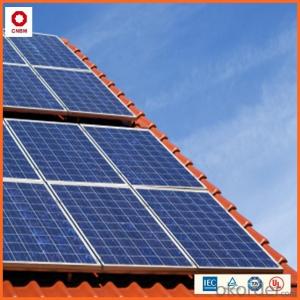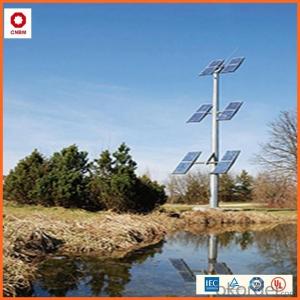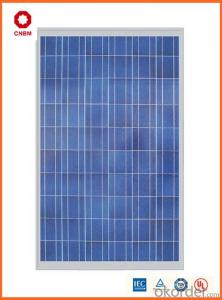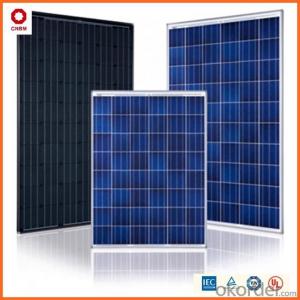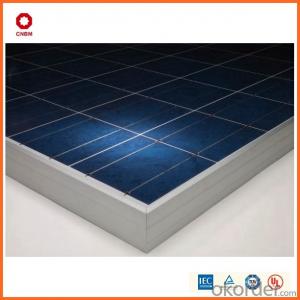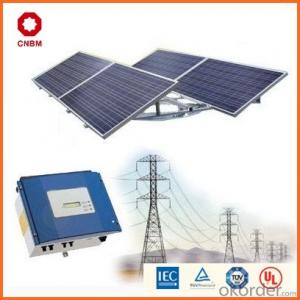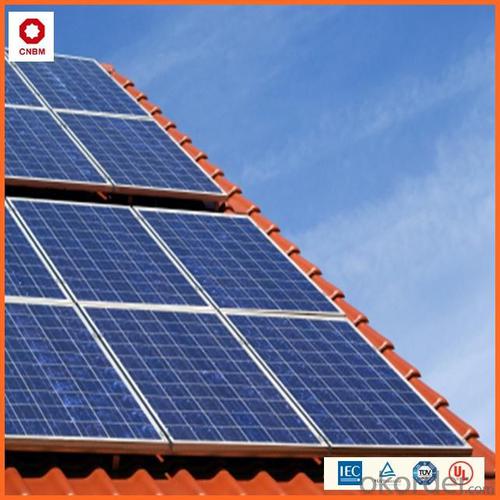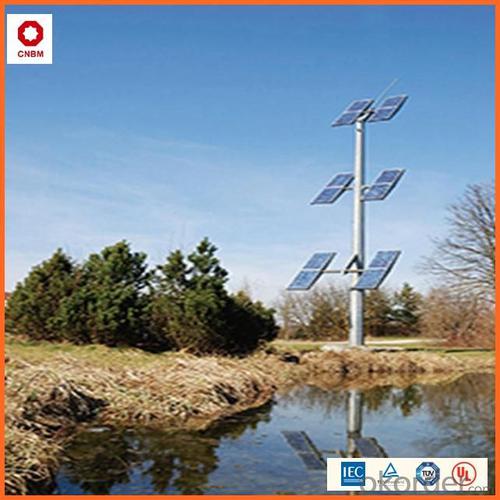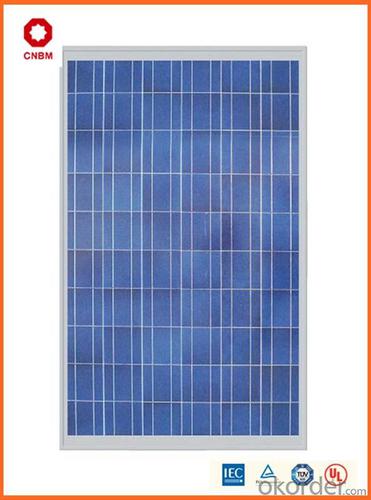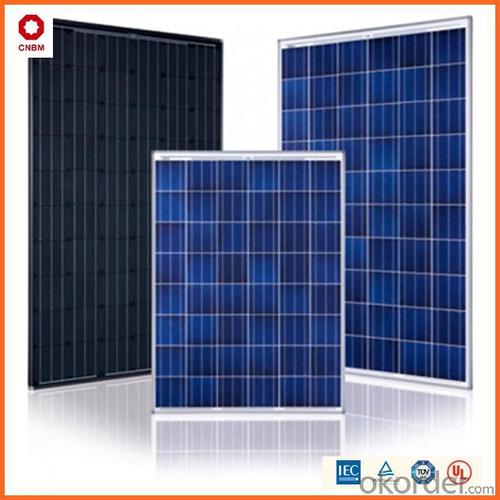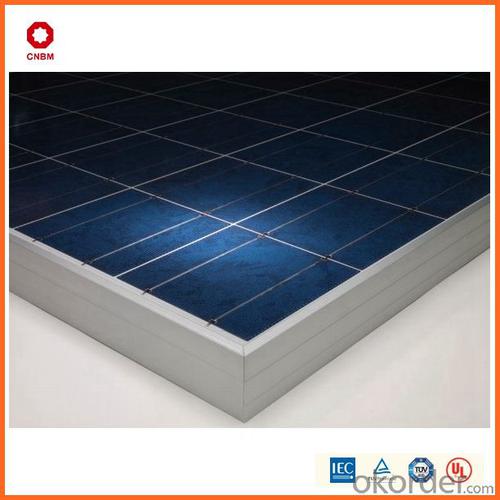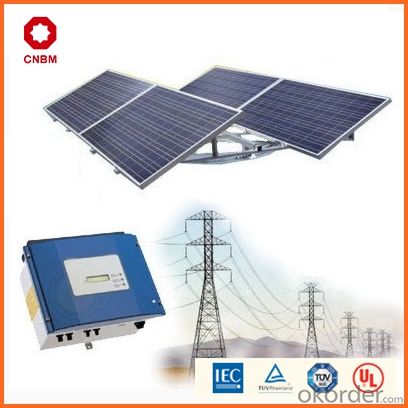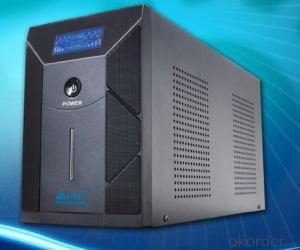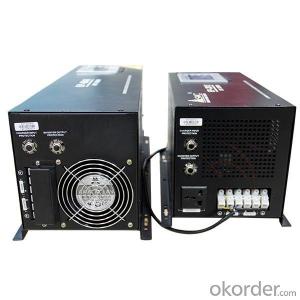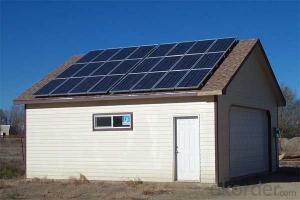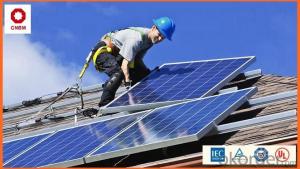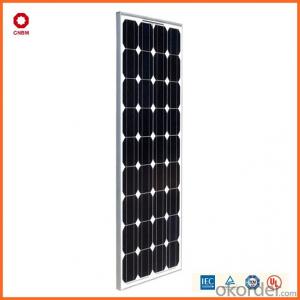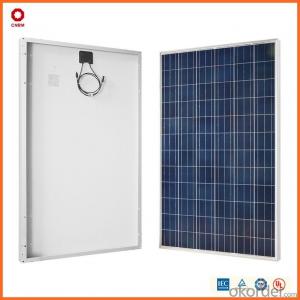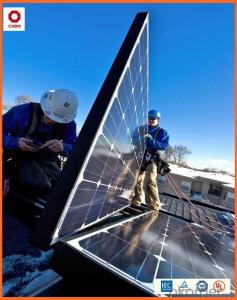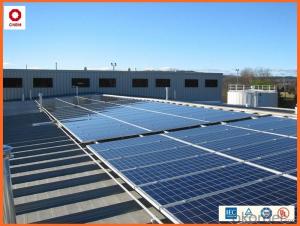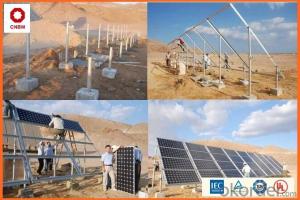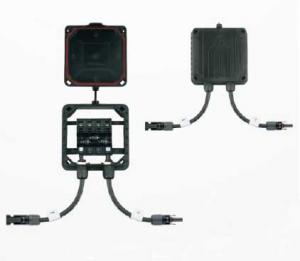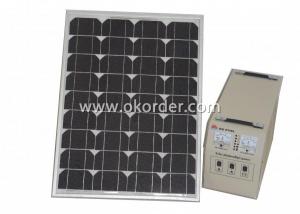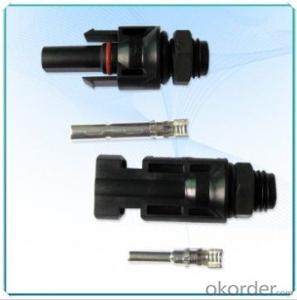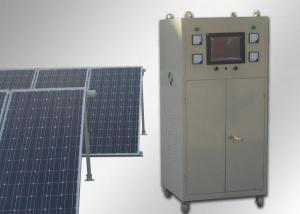35w Small Solar Panels in Stock - Solar Energy Systems Clifton NJ - China Manufacturer
- Loading Port:
- China main port
- Payment Terms:
- TT OR LC
- Min Order Qty:
- 1 watt
- Supply Capability:
- 10000000 watt/month
OKorder Service Pledge
OKorder Financial Service
You Might Also Like
Specification
Product Description:
Hot Sale !!! Quality and Safety of Small Poly Solar Panel 5w~150w
1. Rigorous quality control meets the highest international standards.
2. High-transmissivity low-iron tempered glass, strong aluminium frame.
3. Using UV-resistant silicon.
4. IS09001/14001/CE/TUV/UL
Warranties of Small Poly Solar Panel 35~85w
1. 10 years limited product warranty
2. 15 years at 90% of the minimal rated power output
3. 25 years at 80% of the minimal rated power output
Specification
Characteristics of Poly solar panels CNBM (245-320W) | |||||
Max Power Voltage Vmp(V) | 30.3 | 30.8 | 31.1 | 31.4 | 31.85 |
Max Power Current Imp(A) | 7.60 | 7.64 | 7.73 | 7.81 | 7.85 |
Open Circuit Voltage Voc(V) | 36.1 | 36.6 | 37 | 37.3 | 37.68 |
Short Circuit Current Isc(A) | 8.50 | 8.55 | 8.65 | 8.75 | 8.85 |
Max Power Pm(W) | 230W | 235W | 240W | 245W | 250W |
Temperature Coefficient of Cells Poly solar panels CNBM (245-320W) | |
NOCT | 45± 2 |
Temperature Coeffucients of Isc | 0.0492 |
Temperature Coeffucients of Voc | -0.3374 |
Temperature Coeffucients of Voc | -0.4677 |
Mechanical Data of Poly solar panels CNBM (245-320W) | |
Dimension | 1638 × 982 × 40 mm |
Weight | 19.5 kg |
No. of Cells and Connections | 60 (6 ×10) |
Tolerance | 0 ~ + 5 W |
Cell | Monocrystalline Cell 156 × 156 mm |
Packing | 624 Pcs/40ft(H) Container |
Limits of Poly solar panels CNBM (245-320W) | |
Operating Temperature | -40 to +85 |
Storage Temperature | -40 to +85 |
Max System Voltage | 1000VDC(IEC) / 600VDC(UL) |
Features of our products:
• High conversion efficiency mono/poly-crystalline amorphous silicon solar cells
• Modules incorporate high performance bypass diodes to minimize the power drop caused by shading
• High transmittance, low-iron tempered glass
• High performance EVA encapsulant to prevent destroying and water.
• AI frame: without screw, corner connection. 8 holes on the frame can be installed easily
• Good performance of preventing from atrocious weather such as wind and hails
• Certifications: CE IEC TUV VDE UL, Class I
• 10 years 90% power output warranty
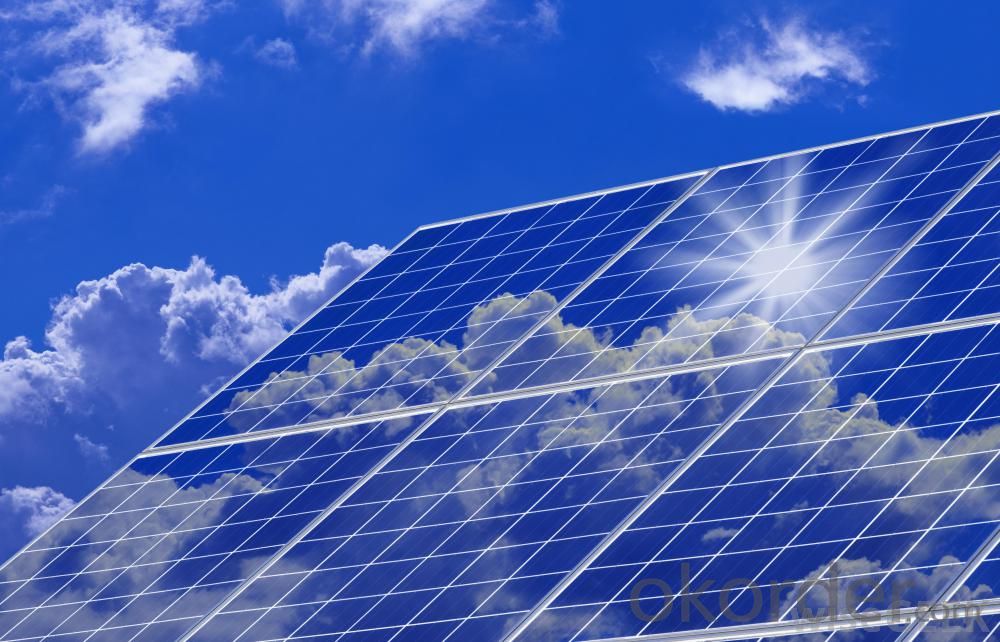
Shipping of Small Poly Solar Panel 35~85w
By Sea | Delivery from Shanghai or Ningbo seaport |
By Air | Departure from Shanghai Pudong Airport |
By Express | Post by DHL, EMS, UPS, TNT. |
Features of our products:
• High conversion efficiency mono/poly-crystalline amorphous silicon solar cells
• Modules incorporate high performance bypass diodes to minimize the power drop caused by shading
• High transmittance, low-iron tempered glass
• High performance EVA encapsulant to prevent destroying and water.
• AI frame: without screw, corner connection. 8 holes on the frame can be installed easily
• Good performance of preventing from atrocious weather such as wind and hails
• Certifications: CE IEC TUV VDE UL, Class I
• 10 years 90% power output warranty
As a professional Solar Panel manufacturer and Supplier in China, we have our customers come around the whole world and our specialization has got a worldwide recognition. Meanwhile, with our superior quality, competitive price, prompt and excellent service, As main role in trade section of CNBM Group, CNBM International Corporation supplies products including Monocrystalline Solar Panel, Polycrystalline Solar Panel ( multicrystalline silicon Solar Panel) have received and enjoyed famous reputation in many countries and regions in the world.
- Q: How does the efficiency of solar panels vary based on the angle and orientation?
- The efficiency of solar panels varies based on the angle and orientation as they receive maximum sunlight when they are positioned perpendicular to the sun's rays. Panels that are tilted towards the sun at the optimal angle can capture more sunlight, resulting in higher efficiency. Incorrect angles or orientations can lead to reduced sunlight absorption and lower efficiency.
- Q: Can solar energy systems be used for powering outdoor appliances?
- Yes, solar energy systems can be used for powering outdoor appliances. Solar panels can be installed in outdoor areas to capture sunlight and convert it into electricity, which can then be used to power various appliances such as lights, fans, pumps, or even outdoor entertainment systems. This allows for a clean and sustainable energy solution for outdoor activities.
- Q: What is the difference between a solar tracker and a fixed-tilt solar energy system?
- A solar tracker is a system that follows the movement of the sun throughout the day, adjusting the position of solar panels to maximize sunlight exposure. On the other hand, a fixed-tilt solar energy system consists of solar panels that are mounted at a fixed angle, typically facing south, and do not move throughout the day. The main difference lies in their ability to track the sun's movement, resulting in increased energy production for solar trackers compared to fixed-tilt systems.
- Q: How do solar energy systems affect air conditioning costs?
- Solar energy systems can significantly reduce air conditioning costs by generating clean and free electricity to power the cooling system. By using solar power instead of relying solely on the grid, homeowners and businesses can reduce their electricity bills, as well as their dependence on fossil fuels. Additionally, solar energy systems can help reduce peak load on the grid during hot summer months, which can lead to lower electricity prices for everyone.
- Q: How do solar energy systems impact the reduction of energy transmission losses?
- Solar energy systems help reduce energy transmission losses by generating electricity directly at the point of consumption. This eliminates the need for long-distance transmission of electricity, which can result in significant losses due to resistance in power lines. By generating electricity on-site, solar energy systems minimize transmission distances, reducing energy losses and increasing overall efficiency.
- Q: What is the role of grounding systems in a solar energy system?
- Grounding systems are essential in a solar energy system for safety and protection against electrical faults and lightning strikes. The purpose of grounding is to connect electrical equipment and components to the Earth's surface, creating a path with low impedance for electrical faults to flow. This prevents the accumulation of excessive voltages that could be dangerous for both people and equipment. In a solar energy system, grounding serves multiple important functions. Firstly, it ensures protection against electrical shock by redirecting fault currents into the ground, thus minimizing the risk of injury. This is particularly crucial since solar panels and inverters are exposed to sunlight and can be accessed by people during maintenance or repairs. Secondly, grounding helps in dissipating static electricity that might build up in the system, especially in panels and mounting structures. If not properly controlled, static electricity can cause harm to sensitive electronics and even lead to fires or explosions. By grounding these components, static charges are safely discharged into the ground. Furthermore, grounding systems play a critical role in safeguarding the solar energy system from lightning strikes. Lightning carries a tremendous amount of electrical energy, and without adequate grounding, it can cause significant damage to the system. Grounding systems provide a low-resistance path for lightning to follow, guiding the electrical energy safely into the ground. This protects the solar panels, inverters, and other equipment from harm. Lastly, grounding systems help maintain a stable electrical reference point for the system. This is crucial for accurate monitoring, control, and efficient operation of the solar energy system. Grounding minimizes electromagnetic interference (EMI) and noise that can impact the performance of sensitive electronic components, ensuring optimal functioning of the system. In summary, the role of grounding systems in a solar energy system is to prioritize safety by protecting against electrical shocks, dissipating static electricity, and safeguarding against lightning strikes. Additionally, grounding systems maintain a stable electrical reference point, promoting efficient operation and reducing the risk of equipment damage.
- Q: What is the role of maximum power point tracking (MPPT) in a solar energy system?
- The role of maximum power point tracking (MPPT) in a solar energy system is to optimize the efficiency and output of the system by continuously tracking and adjusting the operating point of the solar panels to maximize their power output. By ensuring that the solar panels operate at their maximum power point, MPPT enables the system to harvest the maximum amount of energy from the sunlight, resulting in increased overall system performance and improved energy production.
- Q: How do solar energy systems impact the reliability of the electrical grid?
- Solar energy systems can have both positive and negative impacts on the reliability of the electrical grid. On the positive side, solar energy systems can enhance the reliability of the grid by diversifying the sources of electricity generation. Traditional power plants heavily rely on fossil fuels, which are finite and prone to price volatility. By integrating solar energy systems into the grid, we can reduce the dependence on fossil fuels and increase the share of renewable energy sources, which are typically more stable and sustainable. Additionally, solar energy systems can improve grid reliability by decentralizing power generation. Traditional power plants are usually centralized, which means that a disruption at one facility can lead to widespread blackouts. In contrast, solar energy systems are typically distributed across various locations, which reduces the risk of a single point of failure and enhances the overall resilience of the grid. However, solar energy systems also pose certain challenges to grid reliability. One of the main concerns is the intermittent nature of solar power generation. Solar panels only produce electricity when exposed to sunlight, which means that their output can fluctuate throughout the day and is completely absent during nighttime. This intermittency can create challenges in matching the supply and demand of electricity in real-time, potentially destabilizing the grid. To address this issue, grid operators need to implement effective energy storage solutions, such as batteries, to store excess solar energy during peak production periods and release it during periods of low or no solar generation. Additionally, advanced forecasting and grid management technologies can help predict and balance the intermittent nature of solar energy, ensuring a reliable and stable electricity supply. In conclusion, while solar energy systems can enhance the reliability of the electrical grid by diversifying energy sources and decentralizing power generation, their intermittent nature poses challenges that need to be addressed through energy storage and efficient grid management techniques. Overall, with proper planning and integration, solar energy systems can contribute to a more reliable and sustainable electrical grid.
- Q: Can solar energy systems be used for powering healthcare facilities?
- Yes, solar energy systems can be used to power healthcare facilities. Solar panels can be installed on the roofs or open spaces of healthcare facilities to generate clean and renewable electricity. This can help reduce dependence on fossil fuels and lower energy costs for the healthcare facility. Solar energy systems can power various equipment, including medical devices, lighting, heating, cooling, and ventilation systems, ensuring uninterrupted and sustainable energy supply for critical healthcare services.
- Q: Can solar energy systems be used to power vehicles?
- Yes, solar energy systems can be used to power vehicles. Solar panels can be installed on the vehicle's roof or body to capture sunlight and convert it into electricity. This electricity can then be used to charge the vehicle's batteries, thus providing power for propulsion. However, the efficiency and range of solar-powered vehicles are currently limited, and they are more commonly used for charging auxiliary systems or providing supplementary power rather than solely powering the vehicle.
Send your message to us
35w Small Solar Panels in Stock - Solar Energy Systems Clifton NJ - China Manufacturer
- Loading Port:
- China main port
- Payment Terms:
- TT OR LC
- Min Order Qty:
- 1 watt
- Supply Capability:
- 10000000 watt/month
OKorder Service Pledge
OKorder Financial Service
Similar products
Hot products
Hot Searches
Related keywords
